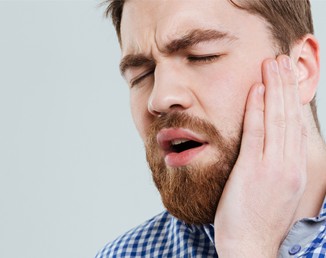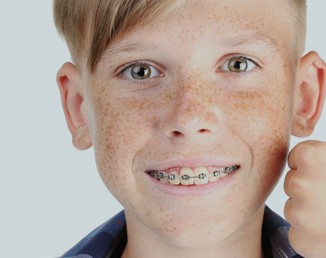
What to do if something is stuck in your teeth
Not only is it irritating – and potentially embarrassing – to have food stuck between your teeth, but it can also lead to dental health problems. If food particles are not removed, they can feed bacteria, which can lead to issues like tooth decay, cavities, inflammation, gum disease and halitosis (bad breath).[1]
In this post, we look at the various ways you can go about removing food from your teeth.
How to get rid of food stuck in teeth
Many foods can get lodged between your teeth but some of the most common culprits include seeds, chewy sweets, popcorn, crisps, sweetcorn, spinach, white bread and meat. Of course, brushing your teeth is vitally important when it comes to loosening trapped food and maintaining good oral hygiene. But brushing alone is not enough to completely clean your teeth. In fact, it’s thought that brushing only cleans around 60% of the teeth surfaces. And when it comes to food trapped between teeth, it can be difficult – and sometimes impossible – for your toothbrush to do the job.[2]
So, how can you remove food particles from your teeth and prevent plaque buildup? Let’s explore.
Swill with water
Rinsing your mouth with water may be enough to get rid of some food particles that become trapped in your teeth. This can be an easy and convenient way to make your mouth cleaner after eating, especially if you are out and about or you know you won’t be able to properly clean your teeth until later.
You should try to swill around 20-30 ml of water vigorously for at least two minutes in order to give yourself the best chance of dislodging food particles. If possible, you should use warm saltwater as this not only helps to remove debris but it can also neutralise acidity and kill bacteria.[3]
Mouthwash
Rinsing your mouth out with mouthwash can also help to shift some pieces of food from between your teeth. There are various different types of mouthwash available, including antibacterial, antiseptic and fluoride versions. Antibacterial mouthwashes, as the name suggests, work by killing bacteria. Antiseptic mouthwashes, on the other hand, reduce the risk of infection by targeting a variety of microbes. Fluoride mouthwash can help to strengthen enamel and reduce the risk of cavities.
Whichever type of mouthwash you choose, you should ensure you follow the instructions carefully. Usually, mouthwashes are designed to be swished around in the mouth for around 30 seconds. Swishing mouthwash like this can help loosened particles to be dislodged.
However, you should never use mouthwash immediately after brushing your teeth. This is because it can wash away the fluoride that’s been left on your teeth from your toothpaste. Instead, mouthwash may be a good option for after lunch.[2]
Floss picks
Unfortunately, swilling water or mouthwash is unlikely to get rid of all food particles. For a more thorough clean and to get rid of stubborn trapped food, floss picks are a good solution. These handy picks can help to dislodge food that is tightly wedged between your teeth, and they can also help to remove plaque along the gumline. Some floss picks, such as DenTek Eco Triple Clean Floss Picks, are coated with fluoride for extra protection. These picks also feature a tongue cleaner to help tackle bad breath and have a mint flavouring to leave you with an extra clean feeling.
To use a floss pick, you simply need to position the pick between your teeth and put gentle pressure on the gum. You should move the pick in an in and out motion to dislodge food and debris, and then rinse your mouth.[2]
Interdental brushes
Interdental brushes, such as the DenTek Eco Easy Brush, are another great way of getting rid of wedged food particles and cleaning the 40% of your teeth that brushing alone misses. With easy-to-grip handles and flexible wire, these brushes are designed to be easy and comfortable to use. Available in a range of sizes, you should be able to get rid of food and other debris from even the tightest spaces.
Once you’ve chosen the correct size brush for the gap you’re cleaning, you should insert it between the teeth and, using a light back and forth motion, remove the trapped food.
Making interdental brushes a part of your everyday oral hygiene routine can not only help you to avoid the irritation and embarrassment that goes along with having food stuck in your teeth, it can also help you to prevent gum disease and other dental health problems.[2]
Resources:
[1] https://www.gosh.nhs.uk/conditions-and-treatments/general-medical-conditions/tooth-plaque/ (resource no longer available)
[2] https://www.nhs.uk/live-well/healthy-teeth-and-gums/how-to-keep-your-teeth-clean/




